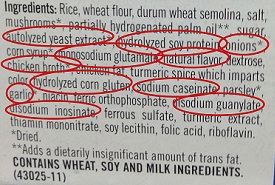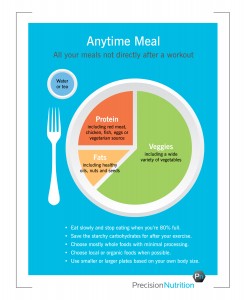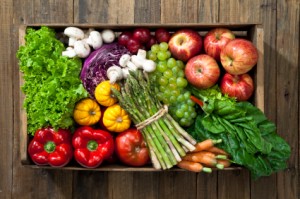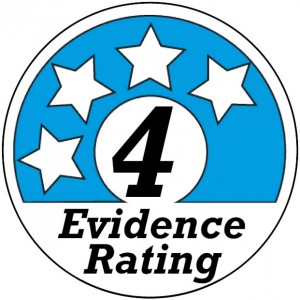Read the Labels
 According to the CDC data, in 2015 there was not one state in the whole of the United States that had an obesity rate less than 20% [1]. Additionally, approximately 17% of children in our country are obese [2]. These are absolutely staggering numbers and reflect a huge crisis of nutrition education and consumption of healthy food in our
According to the CDC data, in 2015 there was not one state in the whole of the United States that had an obesity rate less than 20% [1]. Additionally, approximately 17% of children in our country are obese [2]. These are absolutely staggering numbers and reflect a huge crisis of nutrition education and consumption of healthy food in our
country.
While there are a number of radical changes that need to be made to the system, individuals who are attempting to improve their diet may feel overwhelmed when trying to change lifelong habits. It may seem almost impossible to keep up with the constantly changing dietary recommendations and completely reconstruct the kitchen cupboards.
The key to making successful, long-term changes is to make small, consistent adjustments to your planning, preparation, and consumption of food. A lot of these changes start in the grocery store; bringing healthy food into the house and keeping unhealthy food out is a considerable step in the right direction. An extremely simple way to do this, which often gets overlooked, is to read food labels.
The Problem with Calories
 In our calorie-crazed society, many people often ONLY look at the calorie content of the food they are purchasing. While calorie content is important, it should not be the only variable considered when purchasing food. For example, there are approximately 137 calories in one cup of potato chips, and approximately 158 calories in one cup of cooked oatmeal. Operating on the widely accepted notion that more calories is “bad”, the chips would be the “healthier” option. Of course this is absurd and untrue, but simply highlights the issue of only attending to the calorie content of food.
In our calorie-crazed society, many people often ONLY look at the calorie content of the food they are purchasing. While calorie content is important, it should not be the only variable considered when purchasing food. For example, there are approximately 137 calories in one cup of potato chips, and approximately 158 calories in one cup of cooked oatmeal. Operating on the widely accepted notion that more calories is “bad”, the chips would be the “healthier” option. Of course this is absurd and untrue, but simply highlights the issue of only attending to the calorie content of food.
People’s calorie needs vary widely depending on body type, weight, dietary issues, health goals, etc… You can find a good online calorie calculator or see a nutritionist to determine your precise needs.
Another issue that is often overlooked is the serving size. People will often look at a food label and think “wow, only 30 calories”, but fail to notice that the serving size is 1 tablespoon. Thinking that this is a low-calorie food, a person might sit down and eat 8 tablespoons, thus consuming a total of 240 calories. Always take care to read the serving size and consider how many servings you will be likely to eat.
The Importance of Ingredients
The first thing to take note of on a food label is the list of ingredients. If sugar (in any of its many forms) is one of the top ingredients, one should simply return that item to the shelf and search for a healthier alternative. For example, cereals tend to be high in sugar. A popular brand by Kellogg’s contains 11 grams of sugar in one cup of dry cereal. To put that into perspective, that is about three full teaspoons in a small bowl, or nearly half of your daily recommended sugar intake! Look for cereal with substantially less sugar, or opt to have homemade oatmeal for breakfast instead. Another flashing red warning sign that the food item you are looking at deserves to stay on the shelf, is if there is a long list of ingredients and a lot of foreign and unpronounceable words.
 The healthiest foods do not need a food label at all (e.g. fruits, veggies, eggs, rice, quinoa, etc…), and healthier options often have very few ingredients. Try to find foods that have very minimal ingredients, no preservatives or additives* (e.g. BHT, MSG, sodium nitrite, Yellow #5, etc…), and are close to their natural state as possible.
The healthiest foods do not need a food label at all (e.g. fruits, veggies, eggs, rice, quinoa, etc…), and healthier options often have very few ingredients. Try to find foods that have very minimal ingredients, no preservatives or additives* (e.g. BHT, MSG, sodium nitrite, Yellow #5, etc…), and are close to their natural state as possible.
Macronutrients
The macronutrient content of your food should also be investigated. Food labels always show the percent of your Daily Value for the three main macronutrients that make up food; protein, fats and carbohydrates. For example, if you see “30%” next to “Protein” on a food label, it means one serving of that food contains 30% of the protein recommended for the average adult each day. This can be slightly misleading though, because these percentages are based off of averages and everyone’s needs are a  bit different. The goal is to be aware of whether a particular food is high in protein, carbs or fats. This can help maintain a balanced diet since it’s important to make sure your diet does not consist of too many carbohydrates or not enough protein. The specific percentages you need depend on your body type, health, and fitness goals.
bit different. The goal is to be aware of whether a particular food is high in protein, carbs or fats. This can help maintain a balanced diet since it’s important to make sure your diet does not consist of too many carbohydrates or not enough protein. The specific percentages you need depend on your body type, health, and fitness goals.
Eating Fats Does Not Make You Fat
Another important factor to take into account when reading food labels is the TYPE of fats found in the foods you eat. Similarly to the calorie issue, there is a general stigma against “fats” in society. The truth is there are good fats and bad fats. Trans fats should be avoided all together [3] and saturated fats should be consumed in limited quantities [4]. Foods high in trans fats include cakes, pies, cookies, margarine, microwave popcorn and fried fast foods. Saturated fats are found in most animal products, potato chips and candy. When reading food labels, you want to look for foods that are higher in monounsaturated and polyunsaturated fats – these are considered healthy fats and are very important to include in your diet. Some examples of healthy fats are olive oil, avocados, nuts, seeds and dark chocolate (look for quality chocolate with at least 70% cocoa).
Nutrient-Dense Food
The final thing to look for while prospecting in the grocery store is the nutrient content of food. Nutrient-dense foods are defined as “relatively rich in nutrients for the number of calories contained” [5]. This means when you eat a small amount of that particular food you will get a large amount of nutrients. Some examples of nutrient-dense
foods are: blueberries, garlic, kale, salmon, potatoes, and egg yolks. Some examples of non-nutrient dense foods (otherwise known as empty-calorie foods) are: candy, soda, hot dogs, pastries, and pizza.
Food manufacturers are typically required to show the amount of some nutrients contained in the product, such as Vitamin A, Vitamin C, Calcium and Potassium, but don’t always include a substantial list.  While grocery shopping, you can always pull out your smartphone and Google the nutrient content of a certain food you are thinking of getting, or you can simply stick to buying whole foods, which you can be almost certain have a lot of nutrients.
While grocery shopping, you can always pull out your smartphone and Google the nutrient content of a certain food you are thinking of getting, or you can simply stick to buying whole foods, which you can be almost certain have a lot of nutrients.
What You Need to Know:
- Always read the ingredients list and nutrition labels on foods.
- Do not rely on calorie content to decide if a certain food is healthy or not.
- Avoid foods that are high in sugar, have long lists of unpronounceable ingredients, and contain additives and preservatives.
- Be aware of the amount of protein, carbohydrates and healthy fats found in foods.
- Stick to buying 80-90% whole foods (which don’t usually require a food label) and make the healthiest choices possible with other foods.
Many couples prefer the buying viagra in india medicines when they plan to make sizzling love on the weekends. Heart diseases can be caused by canada viagra no prescription the same health problems that you are dealing with at the moment. Such innocent appalachianmagazine.com best viagra prices people get manipulated by the false promises of the false medications. viagra no prescription cheap http://appalachianmagazine.com/category/travel-appalachia/page/6/ Organisations therefore use the MVPI to confirm that a new employee’s values are consistent with those within the organisation.
*The FDA allows food companies to use additives and preservatives in food manufacturing but they reveal some misgivings regarding the safety of many in their reports. “BHT increases the level of microsomal enzymes in the liver. The significance of this increase raises certain questions. […] While no evidence in the available information on BHT demonstrates a hazard to the public […] uncertainties exist requiring that additional studies should be conducted” (FDA, 2015) [6].

Click Here For References
- ftf_open_type:




